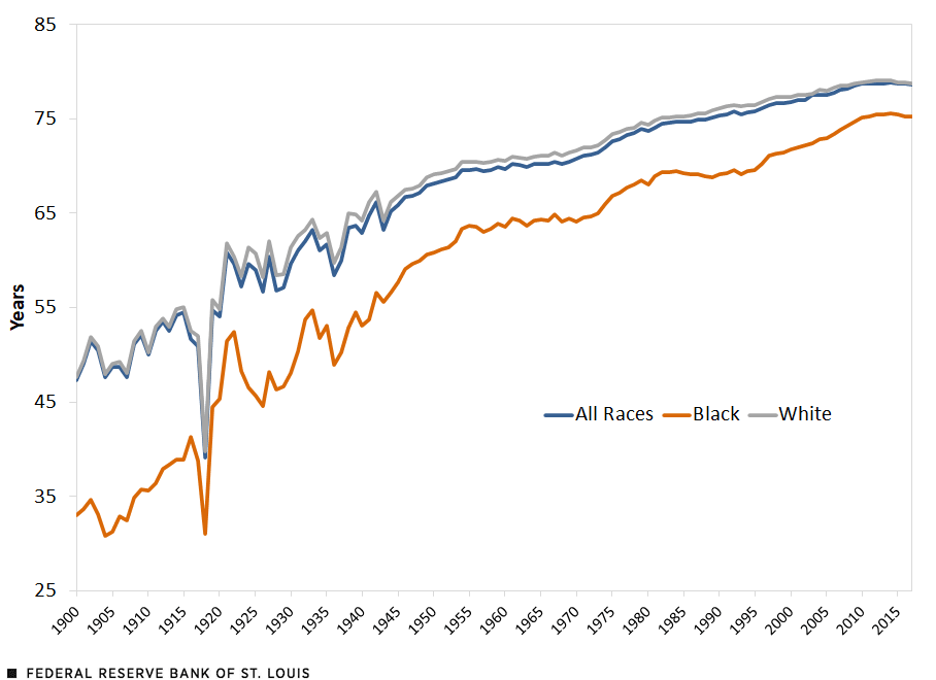With Assembly Bill 3121, passed in 2020, the California state legislature created a task force whose purpose is to “study and develop reparation programs for African-Americans.” On June 1, 2022, that task force issued its lengthy interim report, with an executive summary, which together will divide rather than inform the highly fraught public at large. What is desperately needed today are programs of market liberalization that will raise the welfare of all groups, without seeking to play one off against the other.
But the task force has no such general recommendations. Instead, it chooses to examine complex historical events that took place from the onset of slavery in the United States until the present day. That untidy inquiry should mix together developments of both cruelty and heroism. Had the task force proceeded in a more responsible manner, it would have started with the proposition that many groups—racial and otherwise—have been mistreated and can make, and have made, claims for reparations. And it also should have explicitly acknowledged that at no point in our nation’s history have any such expansive reparations programs been enacted.
Misunderstanding Korematsu
The United States has enacted one widely approved reparations program, which compensated Japanese-Americans who were interned in camps during World War II. The United States Supreme Court, tragically, had approved their internment in Korematsu v. United States (1944). Ironically, noted civil libertarian Hugo Black wrote the opinion in that case, and the attorneys general of California, Oregon, and Washington supported the federal government. Trump v. Hawaii (2018) overruled Korematsu, but thirty years before, Congress passed a carefully calibrated reparations plan in the Civil Liberties Act of 1988. That law “granted redress of $20,000 and a formal presidential apology to every surviving US citizen or legal resident immigrant of Japanese ancestry incarcerated during World War II.” The sums in question were small; the delay in payment was long; the descendants of those incarcerated got nothing. Nonetheless, that legislation helped rectify a major constitutional and policy misjudgment.
The California reparations task force never draws any lessons from this textbook case of tailored relief. No one could challenge the 1988 statute on constitutional grounds. Yet the task force chose not to address the many constitutional challenges under the Equal Protection Clause to its own proposal for a far more expansive, race-based program.
Instead, it shows none of the care and attention of the earlier law. To be sure, the commission includes one legal figure, Donald K. Tamaki, who had been active in getting Fred Korematsu’s criminal conviction for refusing incarceration during World War II overturned. However, its eight other members, all African-Americans, are deeply committed to expanding reparations, and thus the task force never addresses any counterarguments to its many recommendations on matters including education, housing, banking, voting, and much more. California, of course, never permitted slavery; it entered the Union as a free state in 1850. Enormous waves of immigration have arrived over these past 172 years. During these times, Asian-Americans, Hispanics, and various Native American tribes suffered discrimination and harm, but the task force neither explains why these other groups are less deserving of compensation nor gives reasons why certain kinds of mistreatment deserve reparations but not others.
At an operational level, moreover, the task force does not identify the various individuals who are eligible to receive cash payments or to participate in special programs—for example, the special educational programs—that it recommends. The sole reference to these topics comes in a few cryptic sentences calling for the creation of a California African American Freedmen Affairs Agency, whose functions include setting up institutions for processing claims. The report proposes no criteria to inform those judgments. For instance, the report favors the establishment of a “genealogy branch,” but does not set out the criteria needed to determine eligibility. Do recent African-American immigrants to the state receive full or partial benefits? What about African-American citizens who were raised in California but who moved to other states? What about persons with mixed parentage? Will children yet to be born receive anything if their parents have already been compensated? Should these new programs be integrated with existing tax and business programs?
The report is every bit as shoddy in dealing with the legacy of slavery and the perpetuation of what is often called “systemic racism.” The theory assumes that these practices are so embedded in American life that they control the actions of many people who purport to be opposed to all forms of racial discrimination. But that abstract notion refuses to accept evidence such as the huge number of programs that have condemned various forms of racism, sought to re-examine past practices, and introduced explicit reforms, be they of policing, education, or banking. In the form raised by the task force, the charge of “systematic racism” becomes nonfalsifiable.
The “Systemic Racism” Phantom
One way to check this overreach is to ask the many opponents of systematic racism on a national scale to identify by name leaders of our major public and private institutions who are responsible for racism’s continued grip on American life. During the peak years of segregation and into the 1950s, it was easy to point to Alabama Governor George Wallace, who cried “segregation now, segregation tomorrow, segregation forever!” and to Arkansas Governor Orval Faubus, who blocked the Little Rock schoolhouse door to African-American students in 1957. But even as charges of systematic racism proliferate, the California task force does not name a single racist in public office or high position today, although there surely are some. Nor, ironically, does it look in depth at any particular program to explain why or how it misfires, let alone offer a response to the many critics of its programs in virtually every area of life.
Here is one example of the difficulty. The task force conspicuously fails to find that systemic racism persists in voting. Historically, it required no great awareness to identify the massive exclusion of African-Americans from the polls before passage of the Voting Rights Act of 1965. The report contains a chart that correctly shows the massive decline, over 90 percent, in black participation in state elections after the passage of Jim Crow laws. But it ignores the complete transformation of voting throughout the United States identified fifty years later by Chief Justice John Roberts in Shelby County v. Holder (2013). The decision, as I argued at the time, explains in great detail why it was not appropriate in 2006 to impose various preclearance provisions on newly created agencies based on determinations that were sound in 1965 but had become obsolete decades later. Instead, the task force belittles that signal achievement by showing a carefully selected set of minor subsequent shortcomings.
Finally, the task force offers no acknowledgment of the ebb and flow of historical trends that have led to some of the chronic difficulties in the black community today. As the great economist Walter Williams pointed out, it is critical to challenge the common narrative that all forms of disarray among African-Americans are the lingering consequences of slavery and Jim Crow. There is no direct line from those horrors to today. Consider unemployment rates. Williams noted that in 1948, the unemployment rate for black teens was slightly lower than for whites: 9.4 percent to 10.2. The unemployment gap between black and white men (see chart) was slight to nonexistent well into the twentieth century.
 How to explain the differences that started appearing in the 1940s? Williams points to the changes in the minimum-wage law, which had differential effects due to race. Equal employment rates did not imply equal wages. Black workers, for a variety of reasons, had fewer marketable skills, for which they could compensate by taking a lower wage while getting into the labor market and learning a trade, with opportunities for upward mobility. The rise in minimum-wage laws worked alongside other restrictions including union requirements and yes, even the antidiscrimination laws in employment, which helped some workers get good jobs but hurt many others who were left behind. Thus the task force’s recommendation of higher minimum wages in reality will worsen the racial gap in employment rather than close it.
How to explain the differences that started appearing in the 1940s? Williams points to the changes in the minimum-wage law, which had differential effects due to race. Equal employment rates did not imply equal wages. Black workers, for a variety of reasons, had fewer marketable skills, for which they could compensate by taking a lower wage while getting into the labor market and learning a trade, with opportunities for upward mobility. The rise in minimum-wage laws worked alongside other restrictions including union requirements and yes, even the antidiscrimination laws in employment, which helped some workers get good jobs but hurt many others who were left behind. Thus the task force’s recommendation of higher minimum wages in reality will worsen the racial gap in employment rather than close it.
Another factor that belongs in a deeper evaluation of disparities is the rate of out-of-wedlock births, which have long been higher for blacks than whites. It is a matter of deep concern that this rate rose for blacks from about 14 percent in 1940 to 56 percent in 1980, a shift that hampers the education and life prospects of children born into single-parent families. This regrettable trend cannot be attributed to slavery or segregation. As Thomas Sowell has long argued, the culprit is not shape-shifting racism, but changes in mores and laws in the modern progressive era, to which the task force devotes not a single word in its report.
There are many competing and complementary explanations for the multiple crosscurrents observed in the task force report, which concludes that whatever progress was made after abolishing slavery and Jim Crow was short-lived. This conclusion stands in stark contrast to the single statistic that best captures the comparative changes in fortune between black and white Americans over time: black/white life expectancy.

Two big trends stand out immediately. The longevity of all races has increased, and the white/black differential decreased. Why? Because public health, medical, and economic advantages help the most vulnerable more than the most fortunate. To keep that trend alive, our nation’s wealth is far better spent on innovation and technology than on reparations.
















